Mary Ruth Memories of Mobile...We Still Remember
Return to Home Page ||| Return to Table of Contents
Chapter Ten - The Coen Crew, a Dedication
Those of us who have not experienced the trauma of flying bombing missions cannot even begin to comprehend the feelings evoked by the stresses of combat and knowledge that any second may be your last. During the heat of battle so many things were happening that most crewmen simply were too busy to be scared. The professionalism of doing their job, their duty, overrode their fears. It was in the calm following the mission that realization of what had happened and what could have happened sunk in. Crewmen refer to the “Thousand Yard Stare” so prevalent on the faces of men during debriefings conducted immediately upon returning from a mission.
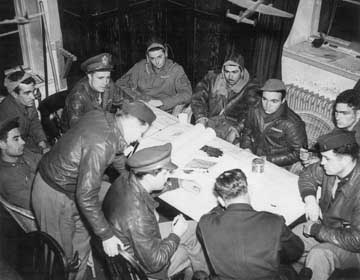 John A. Coen Crew, at debriefing on 22 March 1943.
John A. Coen Crew, at debriefing on 22 March 1943.
This picture graphically depicts the emotions of crewmen when it finally came home to them what they had experienced. More than any words can describe, the looks on the faces of these men communicate to us what bomber crews of that time endured. Accordingly, I dedicate this book to the crew in the photograph.
The picture is of 2Lt John A. Coen and his crew, taken at debriefing on 22 March 1943, following a mission to the port of Wilhemshaven. There they took part in an attack on the German pocket battleship, Admiral Sheer, and other port installations. The German defense, both intensity of anti-aircraft fire over the target and attacks by fighters, was among the most aggressive the 91st Bomb Group had experienced up to then. Almost all bombers received battle damage. For most of the men in the picture, this was only their second mission.
Lt Coen and his original crew arrived at Bassingbourn in early February. Lt Coen flew five missions as a copilot to gain combat experience on 14, 16, 26, and 27 February and on 6 March. On 4 March, most of his crew was sent out with an experienced pilot, 1Lt Harold H. Henderson, along with an experienced flight engineer and waist gunner. They were shot down, with only the flight engineer, T/Sgt Randle E. Nettles, surviving to become a POW.
Lt Coen began flying as a first pilot on 8 March. Since his crew was lost, he was assigned a crew made up mainly of crewmen from the 92nd Bomb Group on detached assignment with the 91st Group. The crew included his original flight engineer, T/Sgt Samuel L. Williams, and waist gunner, Sgt Ben W. Billingsley. He took this crew out again on, 12 and 13 March. On the 18th of March he was assigned the crew of 2Lt Clayton L. Anderson, who had just arrived at Bassingbourn. Lt Anderson was flying his combat orientation missions. There was a shortage of flight crews at that time. Lt Anderson’s crew was assigned to Lt Coen, now an experienced pilot, to fly until Lt Anderson was ready to take them out himself.
On the 22nd of March, the day the picture was taken, Lt Coen’s previous crew, composed mainly of 92nd crewmen, as well as Sgts Williams and Billingsley, was taken out by Cpt Hascall C. McClellan, the 324th Operations Officer. Cpt McClellan’s plane went down, carrying the entire crew to the bottom of the North Sea. The crewmen in this picture most likely had just learned of the fate of their fellow crewmen.
The men in the picture, from the far right, counterclockwise around the table: 2Lt John A. Coen, pilot; S/Sgt Louis T. McLane, tail gunner; S/Sgt Paul E. Kyes, waist gunner; T/Sgt John C. Strozzi, flight engineer, top turret gunner; Sgt Edward F. Simon, waist gunner; 2Lt David F. Gladhart, copilot; S/Sgt Francis E. Byrne, ball turret gunner; Sgt Domenic A. Caruso, radio operator; 2Lt John W. Butler, bombardier; 2Lt Harold A. Davidson, navigator; unidentified debriefing officer.
For the next mission, 28 March, 2Lt Caryll D. Nobbs replaced Lt Gladhart as copilot and S/Sgt James M. Bechtel replaced Sgt Simon.
Lt Coen’s plane went down on the 28th, six days after this picture was taken. All ten crewmen aboard were killed. Sgt Simon was killed in action on 22 June 1943. Lt Gladhart was severely wounded in the left upper forearm by 20 mm cannon fire on 21 May but eventually recovered to resume flying on 16 July. Lt Gladhart completed his 25-mission tour, the only crewman in the photograph to survive the war.
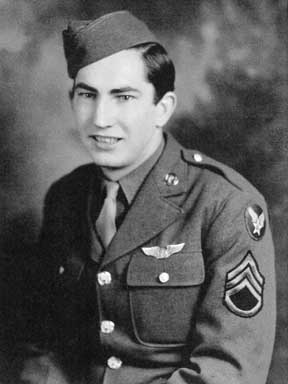
S/Sgt James M. Bechtel. Sgt Bechtel flew as a replacement waist gunner on 2Lt John A. Coen’s crew on 28 March 1943. Sgt Bechtel’s original crew had been shot down on 4 March 1943. His aircraft ditched in the North Sea, with the pilot, 1Lt Allen Brill and copilot, 1Lt Allan W. Lowry, drowning while saving their crew. The ball turret gunner, S/Sgt James E. Morgan, Jr., also drowned. Lt Brill’s surviving crewmen were then split up to fly as fill-ins on other crews. Lt Coen’s plane was shot down on the 28th, killing all ten crewmen aboard. This was Sgt Bechtel’s fourth combat mission.
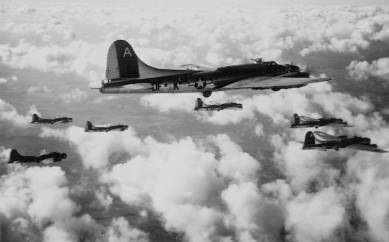
324th Squadron planes in combat formation. Note the two three-plane elements. Left Element, from top to bottom: No. 880, “Little Miss Mischief”; No. 887, “Old Battle Ax”; No. 515, “The Wild Hare”. Right Element: No. 884, “Yankee Gal”; No. 311, “Terry’s Tiger”; No. 993, “Mah Ideel”; the plane in the foreground (No. 085, “Yankee Belle”) is flying in the No. 3 position of the Element in which the plane from which the picture was taken (No. 988, “The B.T.O.”) is flying (in the No. 2 position). The lead plane of this element (No. 128, “Dear Becky”) is out of the picture to the right. (Dale Darling)
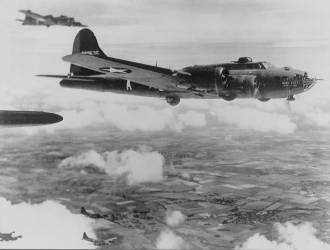
B-17F No. 536, “Mary Ruth” Memories of Mobile, on a combat mission to Huls, Germany, 22 June 1943. She was shot down later on this mission. The B-17 in the upper left, No. 475, “Stric-Nine”, was shot down over the Channel 10 July 1943. The plane from which the picture was taken, No.069, ”Our Gang”, was shot down 17 August 1943. (Ken Brown)
Acknowledgments
I interviewed by phone over 500 former crewmen or their families in putting together these stories. All were most cooperative in taking the time to talk to a perfect stranger calling them out of the clear asking for details of events of more than half a century past. All too often the information I needed brought back unpleasant memories. To a person, without hesitation, they shared with me as much detail as they could recall. Regrettably, space does not allow me to recognize each of them individually. I would be remiss, however, if I did not recognize the assistance of a few individuals.
First and foremost I am most grateful to Bill Potter without whose vast knowledge and records dealing with No. 220 and the extraordinary amount of time he spent in ferreting out specific details, I would not have been able to trace her full history. Dale Darling, who flew his second combat mission in No. 220, supplied invaluable records and detailed information relating to individuals and events of the time. Yvonne Judy Peck most graciously provided personal information regarding Don Judy, including a copy of his pilot’s log. Bill Arthur was extremely helpful in supplying accounts of his missions in No. 220 as well as allowing me to copy his original diary. Robert Margolis made available his extensive logs of missions flown with the Hooper Maplesden crew of No. 220. Andy Schumacher provided detailed notes from the John Madsen crew of No. 220. Joe Weinstock, Ray Darling and Bill Auth supplied the primary framework for the Pilsen mission story. Ken Brown was especially helpful in providing background regarding “Mary Ruth” Memories of Mobile, the plane and crew that first sparked my interest in this endeavor. To all I extend my sincere appreciation, not only for their assistance with these stories, but more importantly for what they did for all of us “back then.”
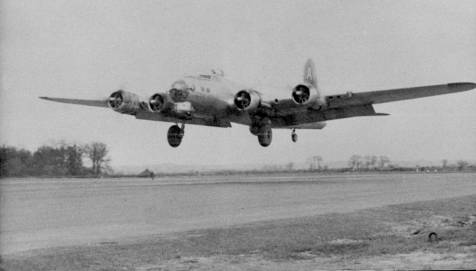
No. 220, “Lady Lois”/“Little Jean”, landing at Bassingbourn upon returning from a mission over Germany. (Andy Schumacher)
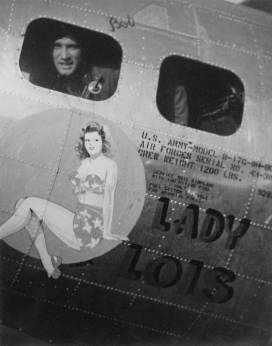
Rear cover photographs
Top: Nose art of No. 220, “Lady Lois”; Bob Boyd, bombardier of the Bill Arthur crew, looking out the side nose window. (Bill Arthur)
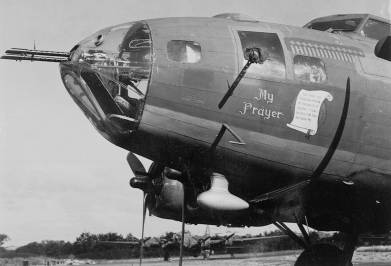
Bottom: Nose art of No. 712, “My Prayer.” (Paul Burton)